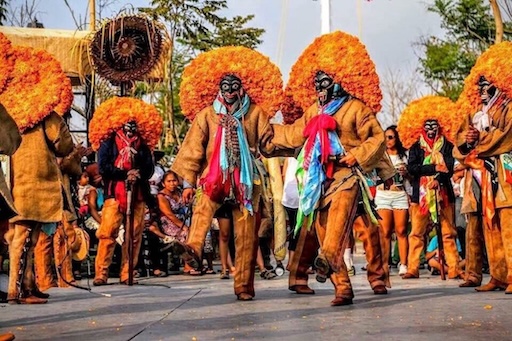Wonders Tagged Under: ritual dance

Tlacololeros – Farmers Dressed as Tigers in Ritual Dances
Explore the Tlacololeros, a fascinating traditional dance from Guerrero, Mexico, where farmers dress...
Read more →
Hudoq Dance – Spirit Masks and Agricultural Rituals of the Dayak Bahau
Discover the Hudoq Dance, a traditional ritual from the Dayak Bahau tribe in East Kalimantan, Indone...
Read more →